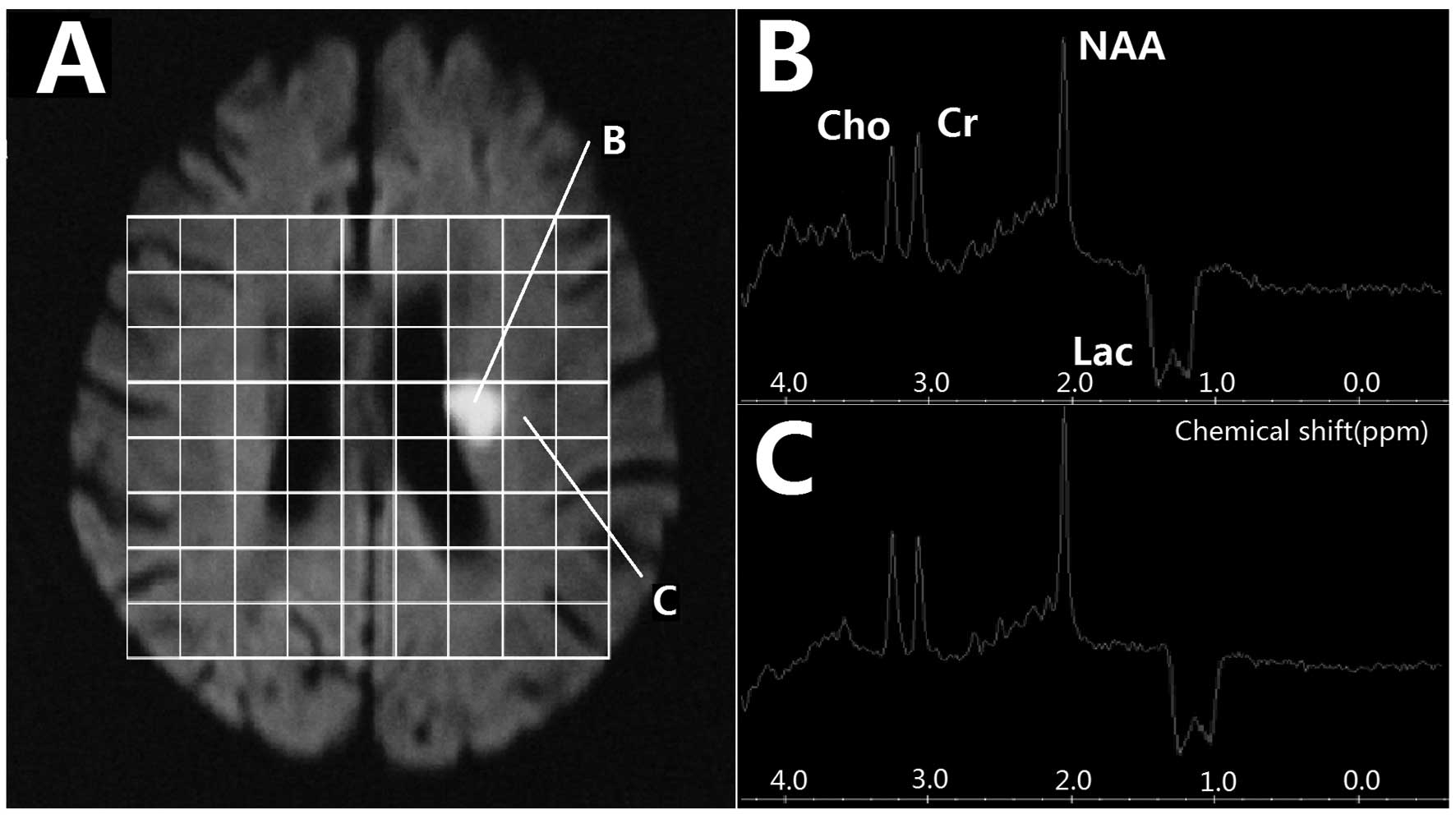Metabolic changes in acute cerebral infarction: Findings from proton magnetic resonance spectroscopic imaging
- Authors:
- Published online on: November 19, 2013 https://doi.org/10.3892/etm.2013.1418
- Pages: 451-455
Metrics:
Total
Views: 0 (Spandidos Publications: | PMC Statistics:
)
Total PDF Downloads: 0 (Spandidos Publications: | PMC Statistics:
)
Abstract
The purpose of this study was to investigate the clinical role of proton magnetic resonance spectroscopy (1H-MRS) in the diagnosis of acute cerebral infarction. Using databases available at the Fifth Affiliated Hospital of Zhengzhou University (Zhengzhou, China), the medical records of 47 patients with acute cerebral infarction treated between April 2010 and March 2012 were retrospectively reviewed. The patients underwent routine magnetic resonance imaging (MRI), diffusion‑weighted imaging (DWI) and multiple‑voxel 1H-MRS examination within 12 h after the onset of stroke. The patients then received normal medical treatment for 2 weeks and underwent follow‑up 1H-MRS examination at 1‑2 months after stroke. The concentrations of the main metabolites [N-acetylaspartic acid (NAA), creatine (Cr), choline (Cho) and lactate (Lac)] in the infarct center, the infarction border region and the contralateral brain areas (control) were analyzed. The 47 patients experienced changes in NAA, Cho and Lac levels at different stages after stroke. In the infarction center, the NAA/Cr and NAA/Cho ratios decreased, while the Lac/Cr ratio increased within 12 h compared with those in the contralateral side. Within 6‑12 h after stroke, the Lac/Cr ratio increased and the NAA/Cho ratio decreased compared with those <6 h after stroke. During the 1‑2 months post-stroke, significant reductions in the NAA/Cr, NAA/Cho, Cho/Cr and Lac/Cr ratios were observed in the infarction center. In the infarction border region, the Lac/Cr ratio increased significantly at 12 h and decreased during the 1‑2 months after stroke. The NAA/Cr, NAA/Cho and Cho/Cr ratios were significantly increased in the infarction border regions of patients who received thrombolytic therapy for 1‑2 months compared with those in patients who did not undergo thrombolysis. Our results highlight the usefulness of 1H-MRS-based metabolomics as a feasible and efficient prognostic tool for assessing the treatment effect of acute cerebral infarction.











